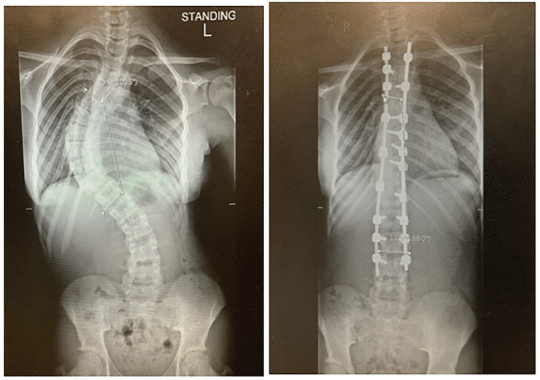Spine surgeries and correction of scoliosis
Scoliosis is one of the common diseases now, In this article, we will talk about the complications of scoliosis, and how it is diagnosed, and finally, we will discuss an explanation of 3 categories of scoliosis treatment, including methods that don’t require surgery.
Diagnosis of scoliosis
Individuals with scoliosis don’t complain about the disease directly, as its symptoms don’t appear quickly, but its complications may lead to critical points. Complications include the following: –
A person with scoliosis doubles the lung and heart damage, which puts pressure on the lungs and heart, leading to difficulty in breathing and other problems in the heart’s pumping of blood.
They appear especially for people who have chronic back problems more than others.
Exacerbation of scoliosis may cause changes in the appearance of the hips and shoulders, as well as the trunk of the waist to one side.

The doctor diagnoses the patient based on a physical examination, and if he confirms the presence of curvature, he orders an x-ray, , CT scan and MRI of the back to show the type of curvature so that the doctor can put an appropriate treatment for the case.
Methods of scoliosis treatment
There are various methods of scoliosis treatment which depends on the degree of curvature:
- mild curves are managed conservatively with long term observation and follow up
- moderate curves are treated through physiotherapy and thoracolumbar braces
- severe cases are treated through surgical correction
Spine Degenerative diseases:
Spine degenerative diseases are becoming more common due to wrong practices
Here at our center we offer different management options for patients with spinal degenerative disorders:
- Conservative measures: including medical treatment and physiotherapy
- Radiofrequency ablation for pain
- Surgical Intervention, open or endoscopic: Simple discectomy, laminectomy and or spinal fixation